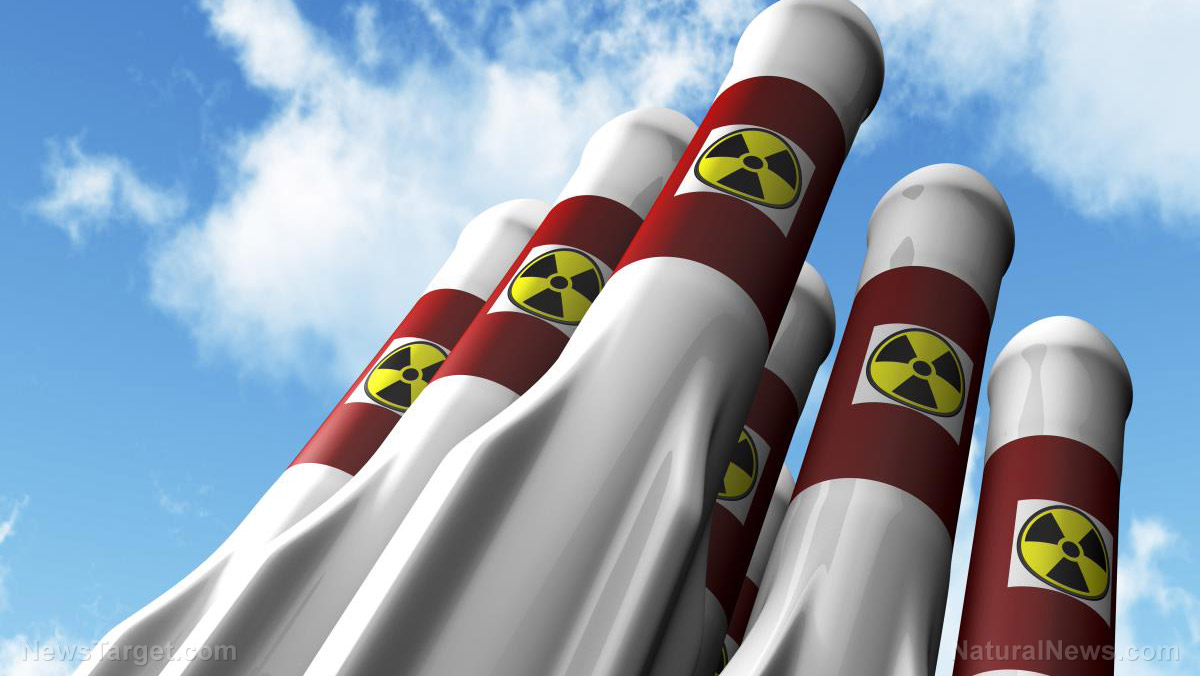UN report: Israeli war in Gaza caused CATASTROPHIC spike in air, soil and water pollution
06/25/2024 / By Laura Harris

A recently published preliminary assessment from the United Nations Environment Program (UNEP) reveals that the ongoing war in Gaza has caused a catastrophic spike in air, soil and water pollution in the region.
This report was made following a request back in December 2023 by the Ramallah, West Bank-based Environment Quality Authority, the main body of the Palestinian National Authority that handles environmental issues in the occupied Palestinian territories.
According to the report, the ongoing conflict has not only devastated the infrastructure but has also generated massive amounts of debris and crippled essential sanitation systems in the Gaza Strip, the West Bank and East Jerusalem.
The war has disrupted nearly all environmental systems and services, including water desalination and wastewater treatment programs to restore the Wadi Gaza coastal wetlands and investments in solar energy projects to power homes and businesses in Palestinian territories.
“The conflict in Gaza has interrupted almost all environmental management systems and services (including ecosystem services) while creating new environmental hazards,” the report reads.
Gaza, which was already grappling with environmental issues stemming from recurring conflicts, rapid urban growth and high population density before the Oct. 7 attack, now faces almost entirely defunct water, sanitation and hygiene systems, with all five wastewater treatment plants shut down.
Marine pollution has also likely increased due to untreated sewage, solid waste and munitions. In the agricultural sector, nearly half of Gaza’s arable land has been damaged, with the interim damage assessment estimating destruction in this sector at $629 million. This includes damage to trees, agricultural holdings, greenhouses, retail establishments and irrigation infrastructure.
Additionally, Gaza, which had one of the highest densities of rooftop solar panels in the world, has seen a large portion of its solar infrastructure destroyed. In 2023, the U.S.-based Centre for Strategic and International Studies estimated that Gaza had around 12,400 rooftop solar systems. However, the destruction of these systems poses a new environmental risk as broken panels can leak lead and heavy metal contaminants into the soil. (Related: Israel preparing for “mass burials” ahead of impending offensive in Lebanon.)
Explosive devices used in the conflict have resulted in over 39 million tons of debris, some contaminated with hazardous materials like unexploded ordnance (UXOs) and asbestos. The report noted that each square meter of the Gaza Strip is now covered with more than 107 kilograms (236 pounds) of debris, a figure more than five times greater than that generated during the 2017 battle for Mosul and is equivalent to ten Great Pyramids of Giza.
“All of this is deeply harming people’s health, food security, and Gaza’s resilience,” stated UNEP Executive Director Inger Andersen.
The 2020 UNEP report also shows similar environmental damages in Palestinian territories
This recent UNEP report is reflected in a similar report from 2020.
According to the 2020 UNEP report, the long-term Israeli occupation of Palestinian territories has caused severe environmental challenges, particularly in terms of water quality and availability, with over 92 percent of water in Gaza deemed unfit for human consumption.
“UNEP found substantial evidence of environmental change and degradation in the occupied Palestinian territory. Surface and groundwater courses and marine ecosystems are being degraded by the discharge of untreated wastewater and by leaching from solid waste and unregulated industries. Rapid population growth, the growth of Palestinian urban areas, the expansion of Israeli settlements, land use changes and the unsustainable use of natural resources have put severe pressure on ecosystem goods and services,” the UNEP stated on its website.
Eoghan Darbyshire, a senior researcher at the United Kingdom-based Conflict and Environment Observatory, commented on the severity of the environmental impacts.
“Understanding the environmental impacts of war is a grand challenge of our time,” said Darbyshire. “The impacts will not only be felt locally where the fighting is taking place but may be displaced or even felt at the global scale via greenhouse gas emissions. Reflecting on the scale of environmental destruction, Darbyshire expressed a grim outlook: “It is my opinion that large areas of Gaza will not be recovered to a safe state within a generation, even with limitless finance and will.”
Watch this clip of a group of illegal Israeli settlers in the West Bank setting fire to a Palestinian village.
This video is from the channel The Prisoner on Brighteon.com.
More related stories:
Trump says Israel must ‘finish the job’ in Gaza, makes false charge regarding October 7 ‘deniers.’
Independent commission says both Hamas and Israel are guilty of war crimes.
Israel releases Palestinian politician after 8 months in prison.
UN probe finds both Israel and Hamas committed war crimes.
Sources include:
Submit a correction >>
Tagged Under:
anti-Palestinian, big government, chaos, clean water, collapse, debris, East Jerusalem, Ecology, environment, Gaza, Holy War, humanitarian, Israel, Israel-Palestine war, military tech, Palestine, real investigations, United Nations, violence, weapons technology, West Bank, World War III
This article may contain statements that reflect the opinion of the author
RECENT NEWS & ARTICLES
COPYRIGHT © 2018 MILITARYTECHNOLOGY.NEWS
All content posted on this site is protected under Free Speech. MilitaryTechnology.news is not responsible for content written by contributing authors. The information on this site is provided for educational and entertainment purposes only. It is not intended as a substitute for professional advice of any kind. MilitaryTechnology.news assumes no responsibility for the use or misuse of this material. All trademarks, registered trademarks and service marks mentioned on this site are the property of their respective owners.


















